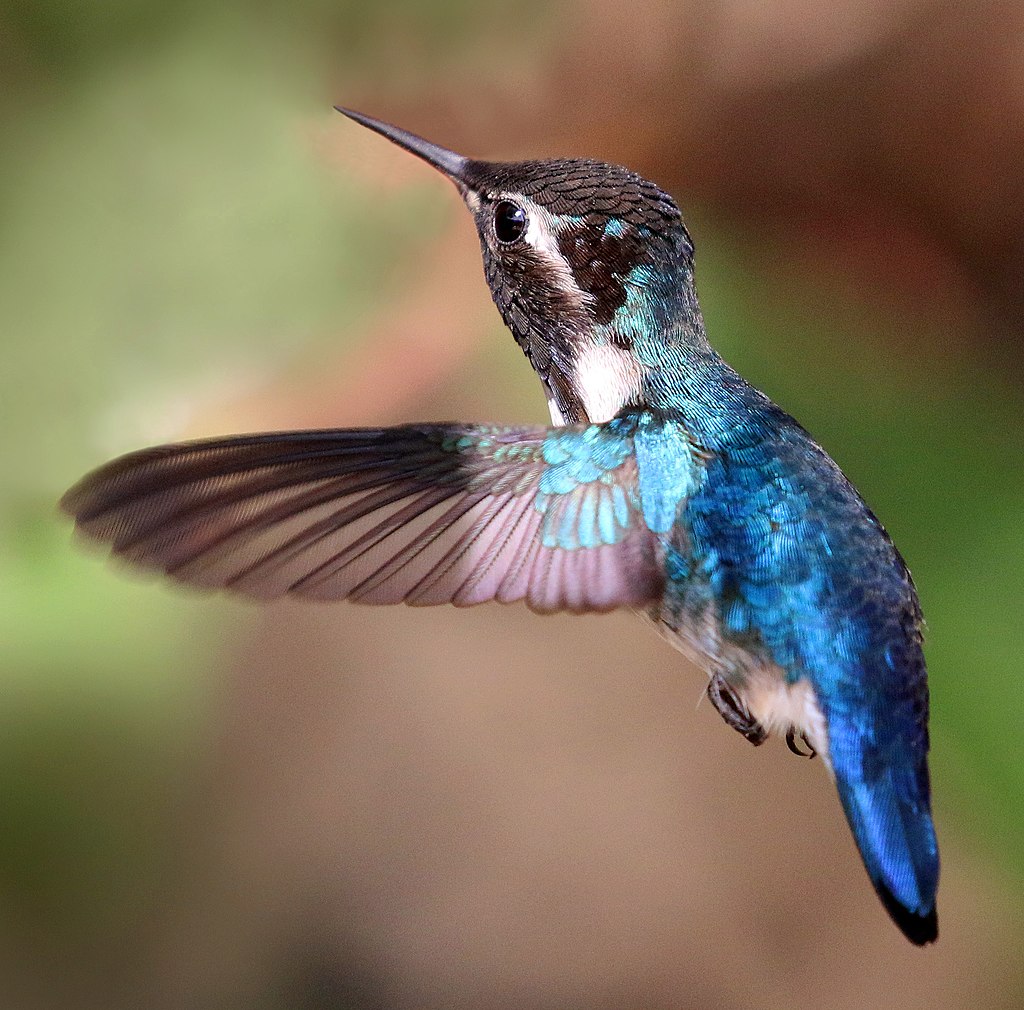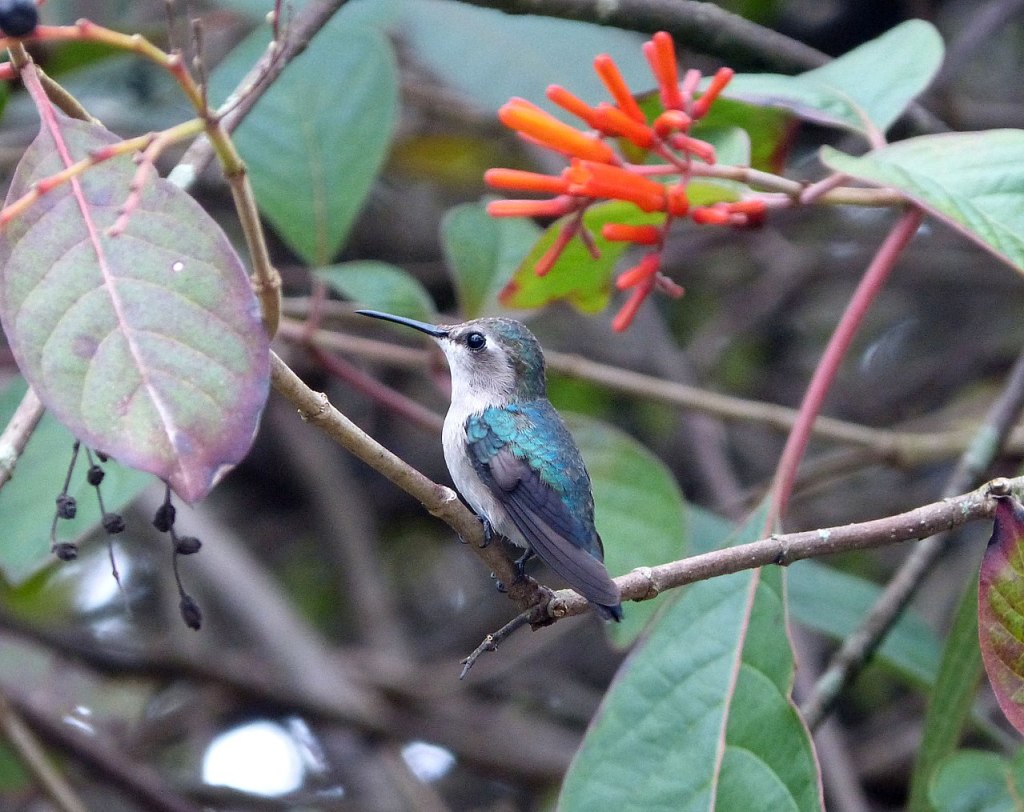I’ve mentioned my fondness for hummingbirds before on this blog. They are such interesting birds, which such amazing flight capabilities, that it’s hard to dislike them. It helps that many species are beautifully coloured. Today’s animal, the bee hummingbird, is the smallest bird in the world (as you may have guessed from the fact that it is named after an insect).
Bee hummingbirds reach massive lengths of five to six centimetres, which is just under the length of my pinkie. The average weight of a bee hummingbird is 2.6 grams, and the average wingspan is only 3.25 centimetres. That’s tiny. Male bee hummingbirds are more brightly coloured than females, with bright red feathers covering their heads and necks during the breeding season. Outside the breeding season, their plumage becomes less exiting, with both sexes having blue-green backsides, and grey bellies.

Bee hummingbirds are very good fliers, and spend a large amount of their time in the air. The birds have a number of adaptations that assist them in flight, including (relatively) large flight muscles, that comprise 22-34% of the birds’ weight. Their shoulders are very flexible, which lets the birds’ wings rotate to 180 degrees, meaning the birds can hover, and fly sideways and backwards. The bee hummingbird has tiny legs — they cannot be used for walking, and are only good for perching.
Breeding season starts when the wet seasons ends, from March to June. This is when the hummingbirds’ favourite flowers are in bloom. Males display to females, using a combinations of singing and flight. During these displays, males can beat their wings at rates of 200 beats per second. If the male performs well enough, a female will pick him for some sweet hummingbird love. She will then build a tiny nest, only 2.5 cm in diameter, using moss and bark held together by cobwebs. She lays two eggs in the nest, each the size of a pea.

Bee hummingbirds get most of their energy from nectar, though they will also eat small insects and spiders. The birds have long, protractile tongues, which are used to reach into flowers. They need to consume a vast amount of nectar to maintain their high metabolism, often eating their own weight in nectar each day, and can visit 1.500 flowers a day. At nighttime, bee hummingbirds enter a state of torpor to conserve energy, slowing their metabolism and reducing their body temperature from 41 degrees to 30 degrees.
So where can you find these tiny wonders? Bee hummingbirds live in Cuba, where there are no major changes in weather throughout the year. They are found anywhere with an abundance of flowers, particularly the solandria grand flora, which is the birds’ favourite plant. So if you ever go to Cuba, try and find these little guys!
Cover image by Ekaterina Chernetsova (Papchinskaya) from Saint-Petersburg, Russia, CC BY 2.0, via Wikimedia Commons
